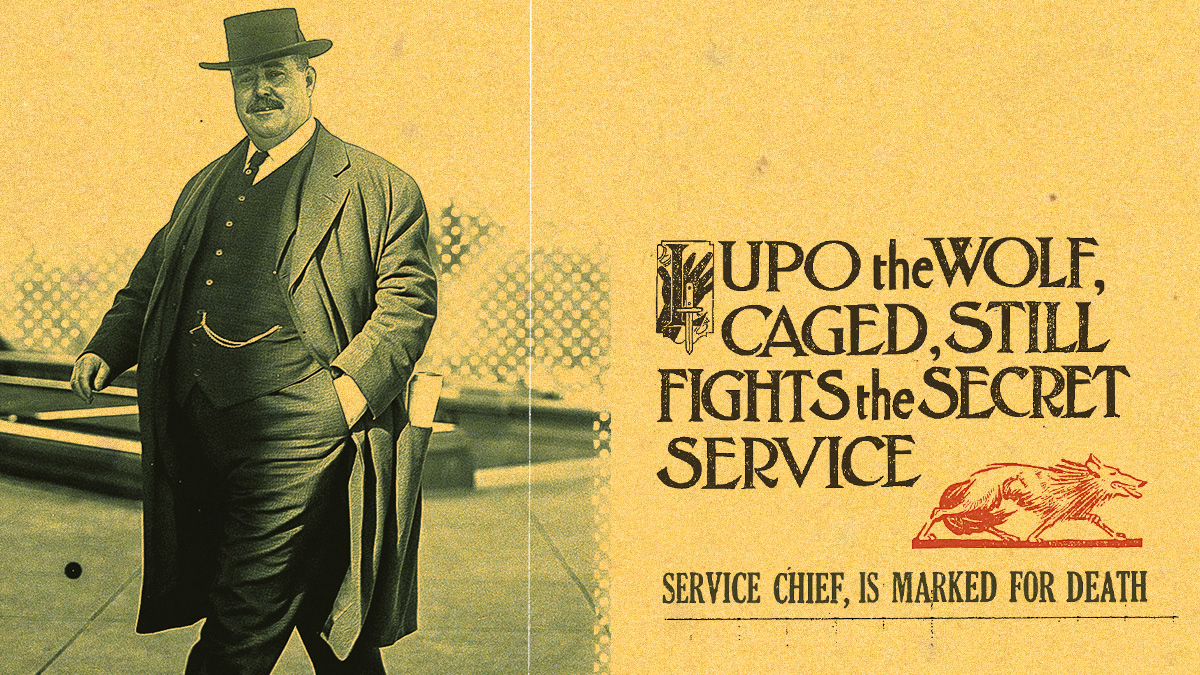William J. Flynn
William J. Flynn, born in 1867, tried to join the Secret Service when he turned twenty-one. After years of rejection, Flynn settled for the post of deputy warden at Ludlow Street Jail before finally joining the Secret Service in 1897. In just four years, he was promoted to head of the Eastern Division where 90 percent of his work was devoted to fighting counterfeiters, something he claimed to have dreamed of since childhood.1
After Ignazio Lupo and Giuseppe Morello were sentenced in 1910, Flynn took a leave of absence from the Secret Service to serve as the deputy police commissioner in New York, where he reorganized the detective bureau, managed investigations into New York’s gambling dens and directed a successful raid on a large Black Hand kidnaping gang.2 He resigned six months later after being assigned low-level tasks that were “distasteful” to him and it was made clear that there was no plan to elevate him to the post of commissioner.3
He left the Secret Service again in 1912 and joined the Curran Committee investigation into police corruption, which was formed following the killing of bookmaker Herman Rosenthal.4 He left that position after receiving no pay. Requests for compensation “got as far as the Mayor’s office, and there they stopped.”5 He immediately returned to the Secret Service as national chief in Washington.6

Flynn, who had access to large volumes of intelligence on America’s counterfeiting gangs, wrote numerous stories detailing some of his high-profile cases. In 1911, eight of his sagas were published in the newspapers. One recounted the Barrel Murder, which Flynn described as “a Mafia murder beyond doubt.”7 Three years later, he penned ten further pieces focused entirely on the Lupo-Morello group. This time adopting a more sensationalist tone, he described them as Black Handers throughout the series.8 In 1919, his writings on the gang were reformatted and expanded into a book titled The Barrel Mystery, much of which was reproduced in the press and drew criticism from the Italian community.9
Flynn resigned from the Secret Service in 1917 and was later appointed director of the Bureau of Investigation, the forerunner to the FBI. He spent his later years editing detective magazines.10



- Flynn, J. William (1924) My Life in the U.S. Secret Service. Flynn’s. October 4, 1924 (v.1 no.3)
‘Notes & Pictures. William J. Flynn’ Metropolitan Magazine. v.34 no.8 (May 1911) New York: Blakely Hall. 73[↩] - Brooklyn Times Union (Nov 18, 1910)
The Paxton Record (Dec 29, 1910)
‘Notes & Pictures. William J. Flynn’ Metropolitan Magazine. 74[↩] - The Brooklyn Daily Eagle (Apr 27, 1911) 1
NYT (Apr 30, 1911) 6[↩] - The Brooklyn Daily Eagle (Aug 26, 1912) 3[↩]
- The New York Times (Nov 17, 1912) 18
The Sun (Nov 16, 1912) 1[↩] - West Schuylkill Herald (Dec 27, 1912) 2
The Houston Post (Dec 21, 1912) 2[↩] - The Pittsburgh Press (Jun 18, 1911) [↩]
- The Washington Post (Apr 19, 1914) Magazine Section[↩]
- Lincoln Journal Star & The Charlotte News (1920s)
New York Herald (Feb 9, 1920) 6
New York Herald (Feb 1, 1920) 9[↩] - Dash, Mike. (2009) The First Family: Terror, Extortion, Revenge, Murder and the Birth of the American Mafia. Random House. 350-352[↩]

